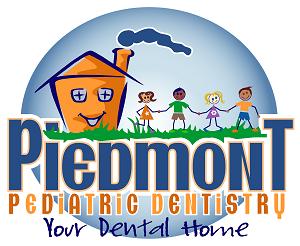There are billions of bacteria living inside our mouths at any given time. Many of these bacteria build up as plaque, causing tooth decay (cavities) and gingivitis, which can lead to periodontal (gum) disease. For a healthy smile, you must practice good oral hygiene every day. Brushing after meals, using antimicrobial mouthwash, and flossing at least once per day helps to keep these disease causing bacteria from reproducing in your mouth, and causing tooth decay. And, healthy diets that minimize sugary and starchy foods also helps to keep those bad bacterial under control.
Where does tooth decay come from?
Your mouth is home to entire communities of bacteria that are recycling your food and drinks. In the process, these bacteria can cause tooth decay in our mouths – by feeding on the sugars in the foods and drinks we consume to grow – then leaving behind the waste, in the form of a biofilm known as dental plaque. This plaque allows all those little recyclers to stick around your teeth longer, until eventually they make acids, which wear down the tooth enamel and cause cavities. The bacteria in the plaque that forms near the gums also produce toxic products that enter the gum tissues, causing gingivitis. If untreated, gingivitis may become periodontitis, a more serious disease where there is bone and tissue loss around the teeth.
Many of the foods you eat cause the bacteria in your mouth to produce acids. Sugary foods are obvious sources of plaque, but there are others that you might not realize can cause harm. Starches—such as bread, crackers, and cereal—also cause acids to form. The dental plaque created from bacteria also produces substances that irritate the gums, making them red, sensitive, and susceptible to bleeding. This can lead to gum disease, in which gums pull away from the teeth and form pockets that fill with bacteria and pus. If the gums are not treated, the bone around the teeth can be destroyed and teeth may become loose or have to be removed.
How can I prevent tooth decay?
The best way to prevent tooth decay and remove plaque is by brushing and cleaning between your teeth every day. Brushing removes plaque from the tooth surfaces. Brush your teeth twice per day with a soft-bristled brush. The size and shape of your toothbrush should fit your mouth and allow you to reach all areas easily. Use an antimicrobial toothpaste containing fluoride, which helps protect your teeth from decay. Clean between the teeth once a day with floss or interdental cleaners to remove plaque from between the teeth, where the toothbrush can’t reach. Flossing is essential to prevent gum disease.
Did you know tooth decay is actually an infectious disease?
 There are an estimated 300 different species of bacteria living inside our mouths. Many of these bacteria can cause tooth decay and are spreadable just like other infectious diseases. According to the science journal Microbiome , an otherwise innocent ten-second kiss can spread 80 million bacteria between mouths!
There are an estimated 300 different species of bacteria living inside our mouths. Many of these bacteria can cause tooth decay and are spreadable just like other infectious diseases. According to the science journal Microbiome , an otherwise innocent ten-second kiss can spread 80 million bacteria between mouths!
Read More: The True Story of Why You Get Cavities, According to a Billion Microbes
Proper Brushing and Flossing Techniques
The American Dental Association recommends the following techniques for brushing and flossing your teeth:
 Brushing
Brushing
- Place your toothbrush at a 45-degree angle against the gums.
- Move the brush back and forth gently in short (tooth-wide) strokes.
- Brush the outer tooth surfaces, the inner tooth surfaces, and the chewing surfaces of the teeth.
- Use the tip of the brush to clean the inside surfaces of the front teeth, using a gentle up-and-down stroke.
- Brush your tongue to remove bacteria and freshen your breath.
Flossing
- Break off about 18 inches of floss and wind it around the middle fingers of each hand. Hold the floss tightly between your thumbs and forefingers.
- Guide the floss between your teeth using a gentle rubbing motion.
- When the floss reaches the gum line, curve it into a C shape against one tooth. Gently slide it into the space between the gum and the tooth.
- Bring the floss back toward the contact point between the teeth and move the floss up or down the other side, conforming the floss to the shape of the tooth.
- Hold the floss tightly against the tooth. Gently rub the side of the tooth, moving the floss away from the gum with up-and-down motions.
- Repeat this method on the rest of your teeth.
Use mouth rinse for added protection
A mouth rinse, in addition to daily brushing and flossing, can increase the cleanliness of your mouth. Antimicrobial mouth rinses reduce bacteria and plaque activity, which cause gingivitis and gum disease. Fluoride mouth rinses also help reduce and prevent tooth decay. Always talk to your dentist about any new products you are interested in trying. Not everyone should use a fluoride mouth rinse. For instance, fluoride rinses are not recommended for children ages 6 or younger because they may swallow them. Always check the manufacturer’s label for precautions and age recommendations and talk with your dentist about the use of fluoride mouth rinse.
Here are a few additional tips for maintaining healthy teeth and gums.
- Reduce the daily amount of sweetened drinks.
- Drink plenty of fluoridated water with meals, and along with sweetened beverages to wash away the sugar and acids.
- Use a straw to help reducing the contact of sweetened beverages with your teeth.
- Supplement (or replace) sugary drinks with milk, yogurt, or water.
